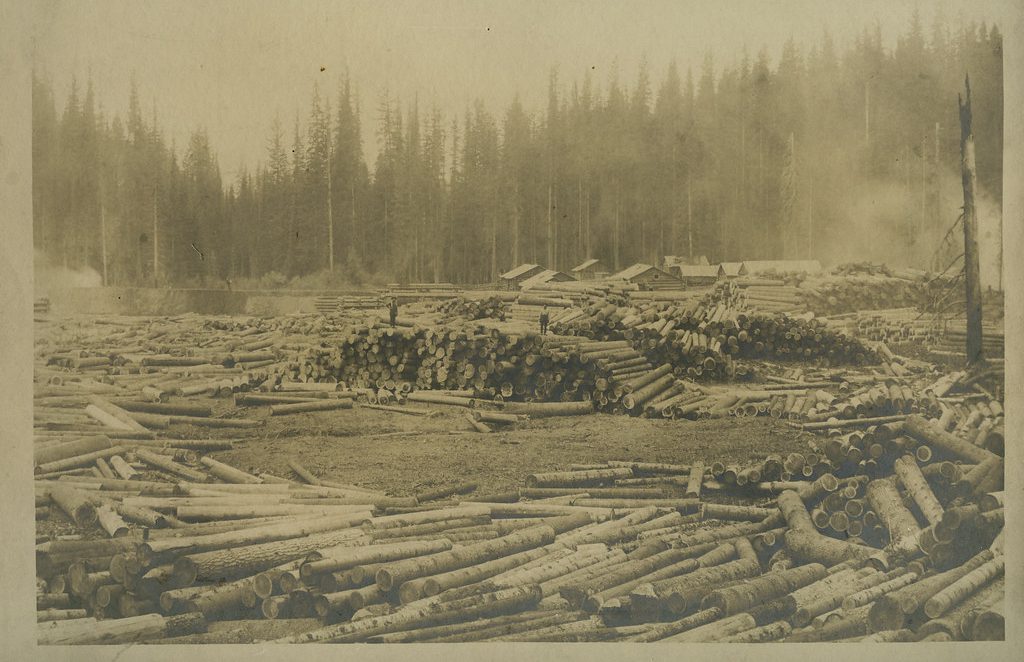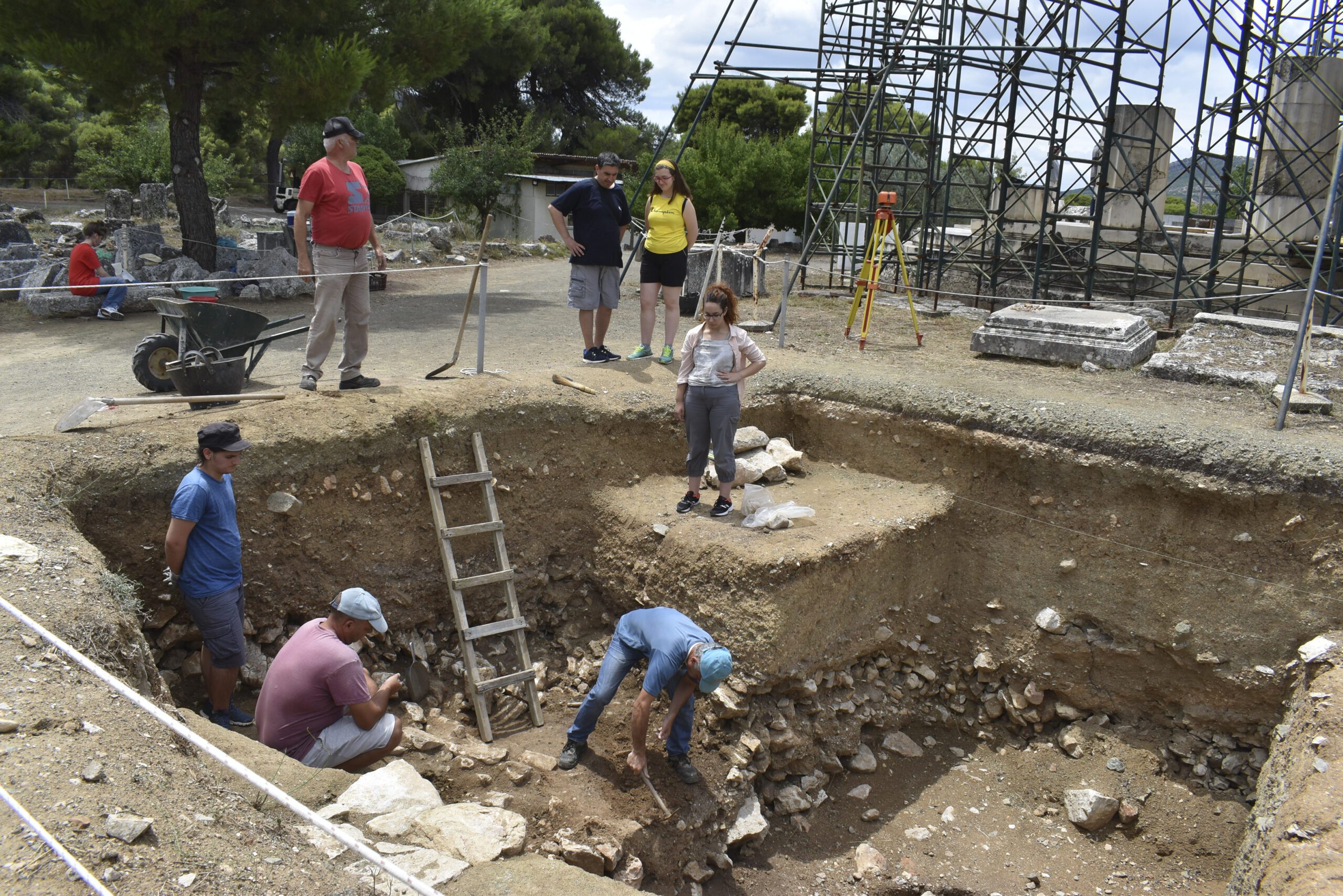The colonial origins of scientific forestry in Britain
Reading time: 27 minutes
Around 1850 Britain had no forestry service and there was no formal training of foresters. Forestry was still practised in the context of estates mainly owned by the aristocracy and managed by foresters who had learned the traditional management techniques under an apprentice system from their predecessors. British forestry was fragmented, not formalised, and far from centralised during the entire 19th century. Most of the forestry remained concentrated on large privately owned estates, especially in Scotland, where it served the double purpose of ornamental woods and, to a lesser extent, wood production for local use. The British Government and many landowners did not feel the necessity to increase timber production and introduce modern formalised forestry practices from the continent because the British had direct access to the large timber reserves of their Empire, of Scandinavia and the Baltic states. Importing timber from overseas was much cheaper than to produce it back home in Britain. At the same time the expansion of commercial agriculture under the East Indian Company and later the construction of the railways seriously depleted timber resources on the Indian sub-continent. In response the colonial authorities in India created the Indian Forestry Service and introduced modern scientific forestry from continental Europe in order to prevent further destruction of the forest resources.
Back in Britain, some Scottish landowners realised that the potential for forestry in Scotland was considerable and that by creating and expanding forestry they could make their estates more profitable. The creation of demonstration forests, university lectureships and the introduction of scientific forestry from the Continent were all desired and encouraged by Scottish landowners and forester alike. However, the needed expertise was not available in Britain and landowners and foresters had to look overseas to find people who possessed experience with the desired scientific forestry methods. In this paper it will be argued that modern British forestry is rooted within a colonial forestry ideology based on a reductionist scientific approach which originated in France and Germany. In addition it will also be shown that Scottish landowners, foresters and universities played an important part in the introduction and dissemination of scientific forestry in Britain.
| Table: Key events in the introduction of scientific forestry in Britain | |
| 1854 | Establishment of Scottish Arboricultural Society |
| 1856 | Dietrich Brandis introduces scientific forestry in India |
| 1864 | Creation of the Indian Forestry Service |
| 1867 | First Forestry students from India are sent to Germany and France |
| 1872 | Hugh Cleghorn elected as President of the Scottish Arboricultural Society |
| 1877 | John Croumbie Brown delivers a paper at a meeting of the Scottish Arboricultural Society calling for the creation of a forestry school in Scotland |
| 1878 | Forestry school established at Dehra Dun, India, for the training of Indian foresters |
| 1881 | Brandis retires as Inspector-general of Forests in India and is succeeded by William Schlich |
| 1884 | First International Forestry exhibition is held in Edinburgh |
| 1885 | Schlich is succeeded by Berthold Ribbentrop |
| 1885 | Forestry section at the Royal Engineering College at Coopers Hill, Surrey, established by Schlich for training of foresters for the Indian Forestry service |
| 1889 | Lectureship in forestry established at the University of Edinburgh |
| 1891 | Colonel F. Bailey appointed as Lecturer in Forestry at the University of Edinburgh |
| 1905 | Institute of forestry at Oxford University founded by Schlich |
| 1914 | Forestry course established at the University of Aberdeen |
| 1919 | Creation of the Forestry Commission in Britain |
Creation of the Indian Forestry Service
In 1874, in an address to the Royal Scottish Arboricultural Society, Hugh Cleghorn, the first Inspector General of Forests in India, told his audience that “the government in India began to be seriously embarrassed by the scarcity of timber; its attention was directed to the management of the indigenous forests”. Timber resources in India were declining rapidly under the pressures of the high timber demand in the British Empire, local use and above all the rapid expansion of colonial agriculture and the associated loss of forestry cover in India during the first half of the 19th century. An important watershed in the history of Indian forestry was the construction of a railway network after 1850. The network of tracks increased from only 32 kilometres in 1853 to over 51,650 kilometres in 1910. The construction of the railways required an enormous amount of timber because to build two kilometres of track almost 900 sleepers were needed. Indian trees, particular sal (Shorea robusta), deodar cedar (Cedrus deodara), and teak (Tectona grandis) were much used as sleepers, because of their strength and perceived resistance against rotting. Already severely depleted by the clearance of forests for commercial purposes earlier in the century, India experienced a resource crunch, and the authorities realised that the intensive extraction of timber could not be sustained indefinitely. In order to secure a continuous flow of timber the forests had to be brought under control using a management regime that would protect the forests and perpetuate the production of timber.
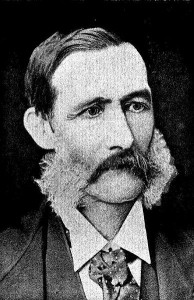
first Superintendent
of Forests in Burma.
source: Wikipedia Commons.
A second reason why the authorities became increasingly alarmed about the rate of forest clearing was the observation of the detrimental effects of overexploitation of the forests on the environment. From the late 18th century botanists and other scientists in the colonial service observed the combined impact of imperialism and local overexploitation of the forests in tropical landscapes. They believed that deforestation caused desiccation, a drying out of the land surface, resulting in a decline in rainfall, flash floods, soil degradation, and silting up of rivers. For example, the first Conservators of Forests in India, Dr Gibson in Bombay and Dr Cleghorn in Madras, warned in the 1840s and 1850s about the increasing devastation of forests and the resulting silting up of rivers.
Alarmed by these developments, Lord Dalhousie, Governor-General of India at the time, published a paper in which he laid down the first outline of an India-wide forest policy, including the establishment of a Forestry Service, in 1854. Two years after the forest policy paper, in 1856, Dietrich Brandis, a German Botanist and forester, was appointed Superintendent of Forests in Burma. Brandis is widely regarded as the founder of modern forestry in India, a fact that was gratefully acknowledged by Indian Government officials:
…the man to whom…must be accorded the proud title of the father of Indian forestry, is not a Briton at all but a Prussian, and that man is Dr Brandis.
It was Brandis who first introduced practical scientific forestry in India by carrying out systematic surveys and drawing up management plans based on growth statistics. The objective of this scientific method was to measure the annual growth of tree stands and to evaluate how much timber could be extracted annually without compromising the future productivity of the forest.
The British authorities were so impressed by Brandis’ work that he was appointed as the first Inspector General of Forests in India, a post he had to share with Scottish botanist Hugh Cleghorn, when the Indian Foresty Service was established in 1864. It was Brandis’ task to organise the Indian Forestry Service, recruit foresters and to initiate proper forestry administration and management. Brandis’ biggest challenge was to achieve full state control over the forests, an aim that facilitated the development of scientific forestry in India.
The Continental connection
In order to understand the development of forestry in India it is important to appreciate the tensions between the Indian Forestry Service and the Revenue Department. The Department regarded the creation of a separate forestry service as a waste of public money and was convinced that it would result in greater cost than benefit. It was the general imperial policy of the British that the administrative machinery in India had to be self-supporting. Therefore foresters in India had to prove that state forestry could be an economically viable enterprise, which made the case for controlled, rationally managed forests even stronger.
The first step to achieve control over India’s forests was through surveying and mapping, to demarcate the forestlands that were state property. Milward, an officer in the Indian Forestry Service, observed about a century later that:
Accurate surveys and sufficiently good maps of forests are a sine qua non for successful administration and management.
The mapping of India’s forests also provided data that made the introduction of scientific forestry management practices possible. Scientific forestry was imported from the major continental European powers, France and Germany, where it had developed since the late 18th century. It was during this period that continental administrators and foresters had become alarmed by a dramatic decline of forestry resources. On top of that came the rivalry between the different German States which stimulated the desire to become self-sufficient and not to depend on neighbouring states for resources such as timber. In response the forest authorities in France and most of the German states encouraged the development of quantitative methods to manage their forests, reverse the depletion and to make their states independent from timber imports. The scientific forestry method imported in India stood in direct line with an essentially German continental tradition with a flavour of French forestry management methods mixed in. The dominant paradigm of scientific forestry management is to pursue maximum sustainable yield, and profit, which resulted into a tradition of quantitative forestry management. This tradition was based on the collection of quantitative data on trees and forests by measuring sizes and volumes. The results of field studies were compiled in tables, which organised the various tree size categories and served as a tool to calculate growth rates and loss rates which made it possible to predict sustained yield. Some authors have described the German scientific forestry tradition as ‘bookkeeperish’ and based on a set of rigid rules producing artificial, even-aged, monocultural forest plantations.
The French forestry tradition, although scientific, was more diverse and left room for more traditional forms of forest management. Due to economic and political pressures the French forestry school was concerned with the conservation of coppices and uneven aged mixed stands but also with the creation of even aged high forests by converting coppices and mixed stands. However, the conversion of coppices and mixed stands into forestry plantations conflicted with the interests of the French water authorities and the charcoal industry. This produced much debate and controversy between foresters and other interest groups, but a compromise was reached and, in the end, a moderately conservative forestry practice emerged. The French practice was characterised by a flexible approach to forests with attention for broadleaves, coppices, mixed stands, and a natural development of forests including natural regeneration. At the same time forest plantations managed on scientific principles were also established in France and its colonies.
Both Continental forestry traditions were blended in the colonial context of India after the establishment of the Indian Forestry Service. However, when the British created the Forestry Service there were hardly any people in the Empire who had direct experience with the Continental scientific traditions. It is therefore no surprise that the authorities turned to Brandis to organise the newly established service, which he modelled after forestry departments in Germany. In order to fill the higher echelons of the Forestry Service Brandis recruited forestry officers from Germany, among them William Schlich, who was to become the founder of forest science in Great Britain and Berthold Ribbentrop. These two Germans were preferred for high office over local forest officers for the fact that “the thorough professional training which Dr Schlich and Mr Ribbentrop had received in their own country, had been most useful to them in India”. This ‘usefulness’ was of course the scientific training in forestry, which they had brought with them from Germany. In 1881 Schlich succeeded Brandis as Inspector General of Forests in India, a post he held for four years before an other German forester, Berthold Ribbentrop, succeeded him.
Lower forestry personnel was initially composed of selected civil servants or military officers who were thought to “possess a natural aptitude to the work” in the forests. Their task mainly consisted of acquiring control over the forests and preventing unauthorised felling by the local population. However, it was soon felt that the training of these people was not adequate and that something had to be done to turn them into proper foresters. Because a forestry school did not exist in India and the expertise to create one was lacking, arrangements for the training of foresters were made with the Imperial Forestry School at Nancy in France and with forestry schools in Germany. In 1867 the first students from India were sent to Germany and France, but after 1871 no more students were sent to Germany because it was cheaper and more convenient to concentrate all instruction in France.
The Scientific forestry practice that these foresters imported from Germany and France was extremely reductionist in nature and did not seem to take much account of varying environmental conditions. This led to the belief that a direct transfer of forestry practice from the Temperate Zone to tropical forests would not cause any serious problems. However, foresters initially overlooked the fact that environmental conditions between Europe and India vary considerably and that this requires different management regimes. Only practice taught European trained foresters that their methods had to be modified to make it work under the monsoon and mountain conditions of India. In addition the diversity, large extent and mixed nature of the Indian forests required a more flexible approach to forestry management. The European experience of German and French trained foresters and their encounter with the different environmental conditions in India blended together in the colonial context, creating a distinct Indian branch of scientific forestry. This type of forestry management included measures to conserve the existing forests, countering perceived negative environmental effects such as desiccation, flooding, and soil erosion but also a desire to make the forests profitable. The diversity and mixed nature of the forests as well as the commercial objectives required a management regime favouring “the valuable commercial species and eliminating the less valuable and those interfering with the growth of the former”. This was partly caused by the fact that the number of commercially interesting trees in Indian forests is pretty low. For example, the so-called teak forests had only about ten percent of teak trees. For this reason it was easier to increase the number of commercially interesting trees by means of natural generation aided by cultural operations to suppress the growth of less favourable species. The variety and density of the Indian forests as well as their large extent encouraged the use of natural regeneration. Ribbentrop concluded that the “average cash revenue per acre is too insignificant” to justify clearance of the jungle and the creation of plantations. The creation of forestry plantations was therefore less important, although a considerable number of teak plantations, especially in Burma, were created in places were formerly no forests existed.
However, there was a second factor that produced a brand of forestry slightly different from the original German type. Brandis had recommended to constitute village forests of the kind which existed in Germany and France. The local villagers would manage the forests attached to their villages, although control would not be entirely left to the communities in order to protect and preserve the productivity of the forests. The idea was that village forests would supply produce, such as fire wood and construction material, to the inhabitants of the attached village. However, the colonial government in India saw forest villages as interference with the main objectives of the state forests to secure timber supply and to make a profit. This resulted in a policy to restrict access of the local population to the forests they had previously used as common land. The creation of scientifically managed forests and their commodification contributed to drastic changes in the Indian landscape and local ecosystems. In addition and probably more significant, was the social disruption caused by exclusion of local people from the forests. With the introduction of scientific forestry the use of the forests was monopolised by the state, customary rights were taken away from local peoples and access restricted. This led to social protests right from the beginning of the introduction of scientific forestry around 1850. From that time onwards many episodes of resistance to colonial rule were linked to protest against increasing state control over the forests. To ban the communities from the forests and leave them out of the management process planted the seeds for the social conflicts over forest access which endures to the present day.
The type of scientific forestry that reached Britain was an impoverished one because elements like village forests and even the most basic environmental and ecological considerations were ignored in favour of a limited number of fast growing species which resulted in an impoverishment of forest ecosystems. The interest of the colonial state was mainly economic and not ecological or social. It was this type of hard nosed scientific forestry practice aimed at commercial objectives that was subsequently introduced in Britain by returning foresters. As will be discussed in a subsequent section, these foresters became teachers at the newly created institutions for the training of senior forestry officers for the colonial forestry services in India and other parts of the Empire and Britain.
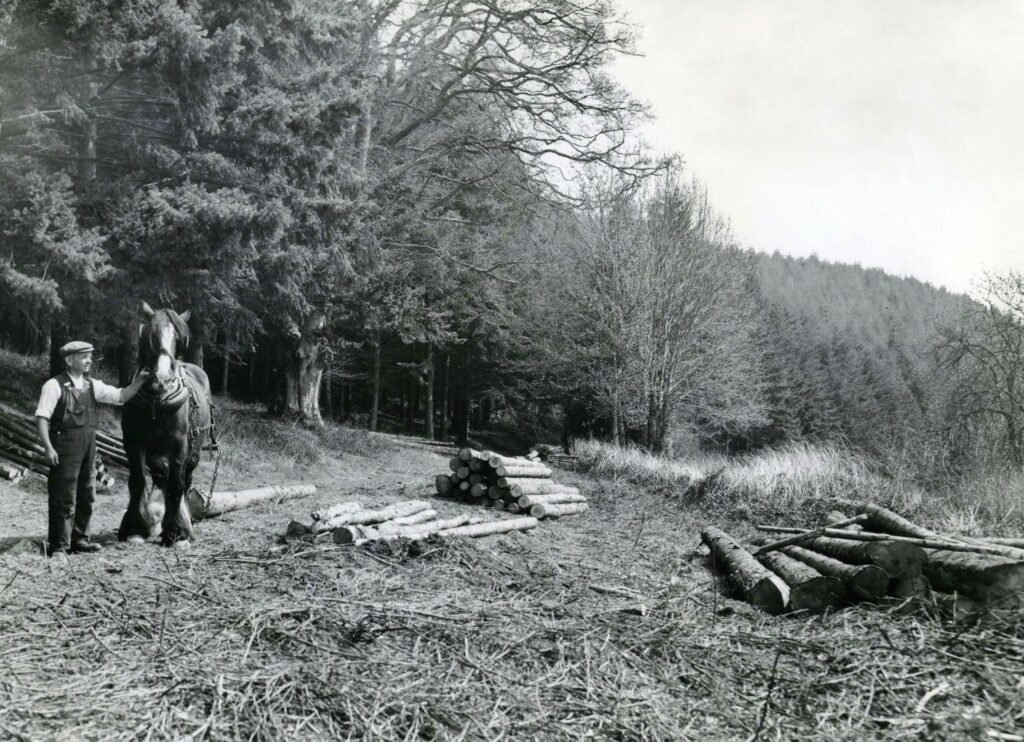
Dehra Dun and Coopers Hill
The successful dissemination of scientific forestry in India and beyond was to a large extent the result of the establishment of a forestry school on the subcontinent. Colonel Frederic Bailey of the Royal Engineers, who had headed the Indian Forest Survey, established a forestry school at Dehra Dun and became its first director in 1878. The main objective of the school was to prepare Indians for the executive charge of state forests and it was organised along the lines of the German forestry schools and included two theoretical exams in forestry theory, engineering and management and a two year practical. In 1907 a research institute was added to the Dehra Dun school, which became a breeding ground for British foresters whom later filled the ranks of the British Forestry Commission and university forestry departments. Experienced foresters were also transferred from India, to help establish forestry departments in other parts of the empire, with the Indian experience usually serving as the model. However, since the Dehra Dun school was initially only intended for Indian forestry officials, students for higher offices in the forestry service continued to be send to Germany and France for their training. In order to bring the education of foresters entirely under British supervision, the leaders of the Indian Forestry Service, Brandis, Schlich and Ribbentrop pressed for the establishment of a forestry school for the training of senior forestry officers in Britain.
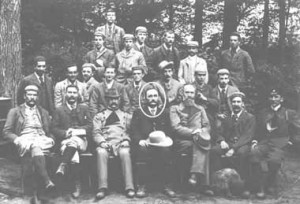
field work in Germany, ca. 1890.
Source: Wikimedia Commons.
When Schlich left the Indian Forestry Service in 1885, he returned to Britain and established a forestry training college at the School of Military Engineering at Coopers Hill in Surrey. In 1905 Coopers Hill was eventually closed and Schlich moved to Oxford to become director of the newly established Oxford Forestry Institute at the University. Schlich profoundly influenced British forestry with his teaching and the publication of a five-volume handbook, Schlich’s Manual of Forestry, which was used as a textbook at British universities until the late 1930s. However, Schlich was certainly not the only forester returning from India who influenced the orientation and direction of British forestry.
The Scottish connection
Scotland had been the centre of forestry in Britain since at least the second half of the 18th century. It was around this time that plantation forestry became fashionable, stimulated by new tree species introduced from North America. The emergence of forestry plantations as a core aspect of Scottish forestry was also associated with patriotism, good taste and above all improvement of the Scottish landscape, i.e. the aim to make better use of the land in order to make more profit. In 1854 the Scottish Arboricultural Society was established by a group of landowners and foresters who were determined to “place Scottish forestry on a sounder basis as an important section of rural industry”. That sounder basis was thought to be forestry science as it had developed on the continent and in the colonial context. In order to promote the idea of scientific forestry the Scottish Arboricultural Society invited prominent Indian forest officials to deliver talks about forestry practice, forestry policy, and forestry education on the Indian subcontinent.
In 1872 Hugh Cleghorn, the first Inspector General of Forests in India, was elected as president of the Scottish Arboricultural Society. He delivered several speeches on forestry in India and Britain to the general meetings of the Society during his presidency between 1872 and 1874. In his acceptance speech Cleghorn praised forestry in Scotland and England but concluded that the small-scale forest estates in Britain were predominantly ornamental with additional aims of producing wood to meet local demands and generating an additional income from the sale of timber. Although Cleghorn did not doubt the skills of Scottish foresters, he concluded that professional training was needed in order to make them fit for service in India and other parts of the British Empire. During his second term as president, 1883-85, his voice was often heard advocating the establishment of a school of forestry in Edinburgh. This time not only for training of foresters for the colonial service but also for improving forestry in Britain, particularly in Scotland.
Another advocate of forestry education in Scotland was Colonel F. Bailey, the first director of the Indian Forestry School in Dehra Dun. In 1885 he delivered a paper on the Indian forestry school at a meeting of the British Association at Aberdeen. In this paper he did not directly press for the creation of a forestry school in Britain but he gave a detailed account of the school at Dehra Dun and how it was organised. This was clearly meant to expose Scottish foresters, landowners and academics to the only example of a forestry school within the British Empire and to encourage them to establish a similar school in Scotland.
The list of Indian forestry celebrities visiting the Royal Scottish Aboricultural Society is incomplete without Dietrich Brandis. In 1887 he delivered a paper to the general meeting of the Royal Scottish Arboricultural Society in which he encouraged and backed the introduction of scientific forestry in Scotland and the establishment of a forestry school:
Ever since I heard of the plan to establish a forest school in Scotland, I have been of opinion, and have given expression to this opinion whenever I have had the opportunity, that as soon as the desire gains ground among proprietors in Scotland to obtain for their estates the services of wood-managers and foresters who have received a more systematic professional training than is attainable at present, they will find the needful means and take the needful steps for the establishment of a forest school.
Brandis, Cleghorn and Bailey had all been high ranking officers in the Indian Forestry Service and therefor the most visible. However, after about 1870 foresters who had served in India returned to Britain bringing back the new ideas of scientific forestry which they disseminated further as they continued to work in forestry in Britain. Forbes described this process in his book The Development of British Forestry published in 1910:
Since about 1860, when Cleghorn and Brandis inaugurated the Indian Forestry Service, a small stream of continental trained foresters … has been returning from it. Whatever the exact practical results of this inter-mixture of British and Anglo-Indian ideas may have been, there is little doubt that fresh ideas were instilled into British foresters and proprietors, and a wider knowledge of forestry as an industry instead of a hobby resulted.
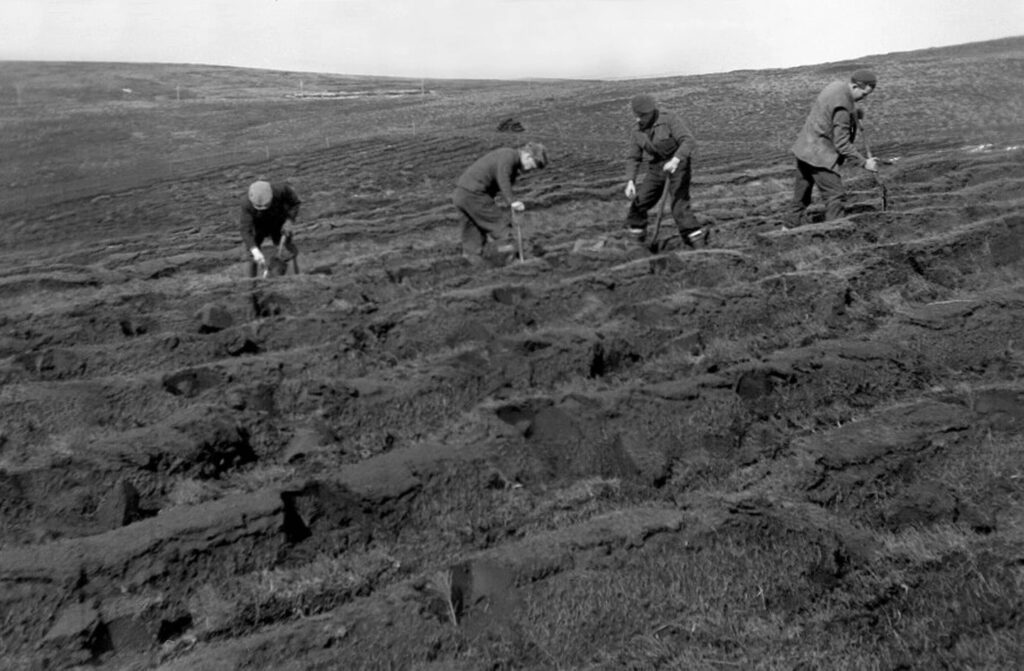
The efforts of these foresters returning from India connected with the desire of Scottish foresters and landowners to improve their forests. It encouraged them to create university lectureships and forestry courses for the education of professional scientifically trained foresters who would help to increase the revenue from estates in Scotland. By the late 19th century, two university courses and a course for working foresters were being established in Scotland and run by foresters with a colonial background.
University courses
In April 1877 John Croumbie Brown, a botanist who had just returned from South Africa, addressed the Town Council of Edinburgh and the board of the Royal Scottish Arboricultural Society, advocating the establishment of a forestry school and arboretum in Edinburgh. Brown considered that it was most desirable to create a forestry school in the Scottish capital because of its university, the proposed creation of an arboretum, the numerous tree nurseries and, most importantly, its central location with regard to the many forest estates in Scotland. He argued that a lectureship of forestry be established at the University and that money had to be raised for this purpose. Croumbie Brown’s address was subsequently published and this pamphlet was widely circulated among members of the Royal Scottish Aboricultural Society, politicians and academics and probably stimulated the events that led to the establishment of a forestry lectureship at the University of Edinburgh.
Five years after Brown’s speech the Royal Scottish Arboricultural Society decided to organise an international forestry exhibition in Edinburgh with the aim to raise money for the creation of a lectureship in forestry at the university. The exhibition was opened in July 1884 and nearly all timber producing counties of the world were represented, showing their forest products and the latest equipment used in forestry operations. The exhibition was a tremendous success and generated a great deal of interest and brought the developing forest service in India and the need for higher forestry education to attention of a wider public in Britain. However, the exhibition did not succeed in raising sufficient funds to establish a lectureship in forestry at the University of Edinburgh. In May 1885 the British Parliament appointed a Select Committee with the task “to consider whether by the establishment of a forest school or otherwise, our woodlands could be rendered more remunerative”. In its final report the Select Committee recommended the creation of a forestry school or a university course in forestry, but the Government undertook no action. However, in August 1889 William Sommerville, who was heavily influenced by the famous German forester Robert Hartig, was appointed Lecturer in Forestry at the University of Edinburgh, the first of its kind in Britain. The lectureship was established through grants made by the newly established Board of Agriculture and the Royal Scottish Arboricultural Society. In 1891, Somerville left Edinburgh on his appointment as Professor of Agriculture at Durham College of Science, and was succeeded by Colonel Bailey.
Bailey was on leave from India when the lectureship became vacant in 1891 and, being in the country, the University invited him to take up the position. He accepted the lectureship and during the next twenty years Bailey consolidated the forestry department. After Bailey’s retirement in 1910, Edward Percy Stebbing was appointed to the Chair in Forestry, which he held for more than forty years, until he finally retired in 1951. Stebbing had served as a forester in the Indian Forestry Service and in East Africa, and was educated at the Royal Indian Engineering College at Coopers Hill and in France, which made him well acquainted with continental and Indian forestry. During his forty year career at the University of Edinburgh Stebbing rose to the rank of professor and created two additional lectureships in the forestry department. More important was that his experience with scientific forestry made the University of Edinburgh a breeding ground for the next generation of foresters who were to join the newly established British Forestry Commission after the First World War. The most famous graduates from that period are probably Mark Anderson and Henry M. Steven. Both men were in the forefront of British forestry because of their empirical approach, something they were trained in under Stebbing. In the 1920s Steven and Anderson joined the newly established research branch of the Forestry Commission and in the 1950s both men became Professors in forestry at respectively, the Universities of Aberdeen and Edinburgh. These two foresters were no exceptions since most university lecturing positions in forestry in Britain were filled with former Indian Forestry Service employees. For example, the Imperial Forestry Institute in Oxford attracted Troup and Champion, who had both conducted pioneering research at Dehra Dun, as professors. Through these university courses scientific forestry imported from India gained a permanent foothold in the United Kingdom.
The Forestry Commission
The real breakthrough of scientific forestry in Britain came with the establishment of the Forestry Commission. During the First World War Britain was cut off from its overseas timber supplies and had to rely on its own woodlands and forests. The war reduced forest cover in Britain to less than five percent of its total land surface, the lowest ever known, and Britain’s dependence on foreign supplies of timber during times of war became a major concern. In order to rebuild stocks and create a strategic timber reserve the Forestry Act of 1919 was passed and the Forestry Commission was established. The Forestry Commission was organised along the lines of the well-proved concepts of state forestry in India and continental Europe. This concept included the establishment of a corps of scientifically trained foresters, state purchase of land for creating forestry reserves and forest management according to working plans. Timber reserves had to be established as soon as possible and scientific forestry was believed to be the most effective method of creating the new plantations. The type of plantations chosen was that of even aged, single species, high forests with a management regime based on statistical tables to calculate growth rates and loss rates which made it possible to predict how much timber could be harvested. The new plantations were normally established on bare ground in upland areas and were made up of non-native fast growing conifer species, mainly Sitka spruce (Picea sitchensis), Lodgepole pine (Pinus contortavar. latifolia) and Norway spruce (Picea abies). It is important to note that Britain was late in adopting scientific forestry and that early debates about scientific forestry took mainly place in the colonial context placing the imperial centre somewhat at the fringes of imperial forestry.
After the Second World War forestry was further mechanised with the introduction of large scale ploughing and the application of artificial fertilisers. This allowed foresters to create uniform forests on an unprecedented scale in Britaint and to prepare soils which were previously useless for forestry. By doing so forestry was turned into a scientific standardised production operation in which efficiency became the benchmark. The need for efficiency and fast growing plantations became even more pressing after the so called Zuckerman Report removed the strategic objectives from British forestry policy in 1957. Following the Zuckerman Report an inter-departmental Cabinet Working Party set up to review forestry policy concluded:
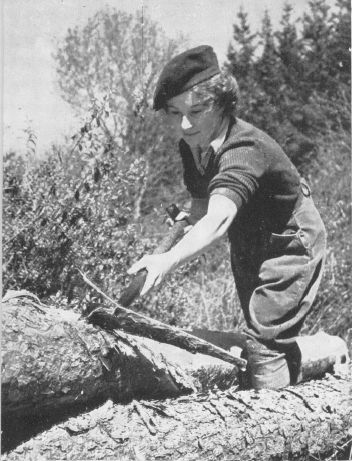
…although a measure of subsidy may be justified on social grounds it would not be to our general advantage, or accord with our policy of increasing liberalisation of trade, to foster the production of raw materials for British industry at anything other than truly competitive prices… .
It was this new reality that forced the Forestry Commission to show that forestry in Britain could make a profit.
The concentration on a limited number of species planted as monocultures driven by strategic and economic pressures contributed to drastic changes in the British landscape. Large geometric blocks of conifers appeared in he landscape, forestry roads were bulldozed on hillsides and drains were dug across the moors. Although the landscape and social conditions are different in Britain, it is striking that, like in India, Forestry Commission officers were casting a very reductionist eye on forest ecosystems and the landscape by following specific political and economic objectives. In this process access to the forests by the local population and tourist was often restricted and objections to forestry because of its impact on the landscape were ignored for a long time. Foresters overlooked many of the social and environmental implications of their actions and dismissed the value of traditional woodland practices, which were regarded as unscientific and outmoded. These were only revived with the rise of popular resistance to commercial forestry plantations, the creation of community forests and introduction of conservation management during the last decades of the 20th century. Perhaps British foresters and conservationists should turn once more to India to learn from the experiences of the long-standing social protest movements against modern forestry in that part of the world.
Summary and conclusions
Scientific forestry was first transported to India from Continental Europe because of a lack of expertise in the British Empire. It was for this reason that the Indian Forestry Service employed German foresters and send forest officers for their education to Germany and France. Back in India the French and German forestry traditions were blended and transformed under political and economic pressures, and had to be adapted to the monsoon environment, creating a distinctive Indian branch of scientific forestry. This branch of forestry ignored ecological and social realities in favour of fast growing pure stand forests and plantations managed with statistical tables in order to satisfy the economic objectives set by the government. This type of forestry was introduced to Britain by retired foresters from the Indian Forestry Service, who subsequently became involved in forestry education in Britain.
In Britain, in particular in Scotland, a forestry practice existed which had its roots in estate forest management, but this tradition was not regarded as being scientific. By the mid-nineteenth century landowners wanted to get more profit out of their estates and viewed the introduction of scientific forestry as the means to do so. This coincided with the first scientifically trained foresters returning from India who lobbied for the establishment of forestry schools for the training of officers for the colonial forestry service. It was in this context that the desire to make better use of Scottish forest estates and demands of forestry in the empire came together and resulted in the establishment of forestry courses at universities in Scotland and at Oxford. Retired colonial foresters taught these university courses, reinforcing the link between the Scottish forestry scene and colonial forestry. The real breakthrough of scientific forestry in Britain came only after the establishment of the Forestry Commission in 1919, fifty years after the creation of the Indian Forestry Service. The organisation and practice of Indian forestry was copied without much modification and large monoculural plantations managed on scientific principles appeared in the British landscape. Elements like the social functions of forests and even the most basic environmental and ecological considerations were neglected in favour of fast growing monocultural plantations. The interest of the British Government, like its colonial counterpart in Indian, was mainly economic and strategic and that would dominate forestry policy in the United Kingdom for most of the twentieth century.
This article was originally published in Environmental History Resources.



